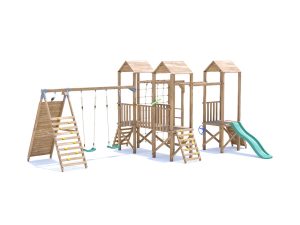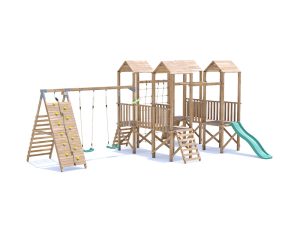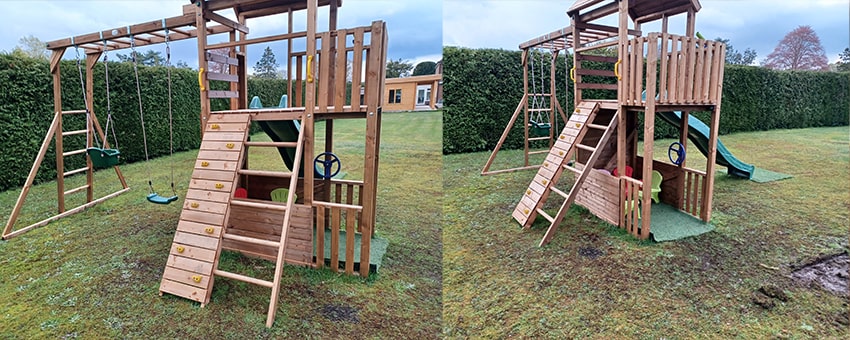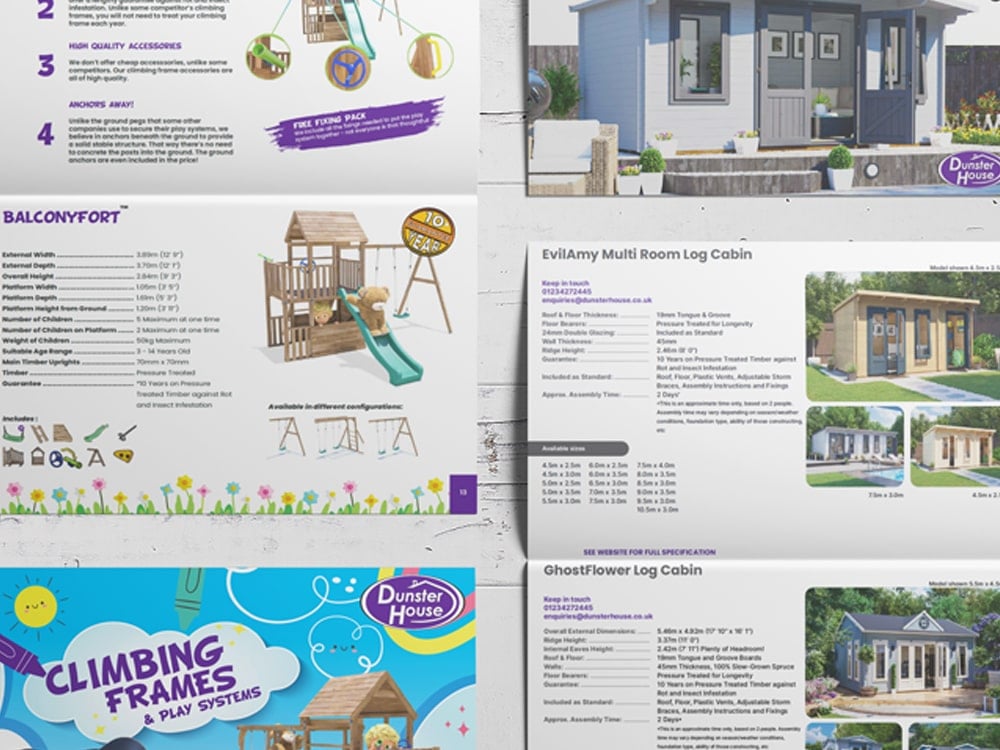

Need some advice on maintaining pressure treated climbing frames, then you’ve come to the right place.
If required, you can download a copy of the instruction manual in the Customer Login Area
Pressure Treated Climbing Frames
Our climbing frames are made with non-toxic pressure treated timber. This has passed testing to EN71 part 8 which is a test for toxic substances, should a child try to chew the toy.
A climbing frame is an outdoor product meaning it will constantly be exposed to the elements. This is why the wood needs to be treated, to ensure it will last and remain safe for your children to enjoy for years. There are different levels of treatment, including painting, staining and dip treating, which only coat the exterior surface.
At Dunster House, we use an intensive process called ‘pressure treating’. This method gives high levels of protection, durability and low maintenance. This is because it forces preservative deep into the timber as moisture is removed. Pressure treating ensures that the wood is fully protected against rot and insect infestation. We are so sure of it’s ability that it comes with a genuine 10 year guarantee.
Climbing Frame Maintenance:
Maintenance is very important in order to keep your climbing frame safe, in good condition and prolong its life. We recommend you carry this out seasonally. In this guide we will cover:
- Removing mould/mildew
- Treating the timber
- Base inspection
- Timber inspection
- Guarantees
Removing Mould/Mildew
If there is mould on the timber it will need to cleaning with a mild bleach solution or mould cleaner to kill the spores. You can deal with mildew by using a mild detergent and warm water.
Treating the Timber
Although your climbing frame has been pressure treated, we still recommend treating it periodically with a suitable water repellent treatment to minimise, but not completely remove the possibility of twisting, warping, cracking or other physical deformation caused by changing moisture content. We use Sovereign Clear Water Repellent Wood Treatment on our display models as this creates a barrier which repels water but still allows the wood to breathe. You should make sure that the timber is free from debris and surface moisture. Additionally, make sure you apply the treatment as per the manufacturer’s guidelines.
Base Inspection
Check the ground is in good condition and that it has not subsided at all, check the levels to make sure that there are no problems. An un-level base will cause issues with the product and may make it unsafe. No timbers should be submerged in the ground as this will void the guarantee. You should keep the area weed free and any grass short so that timbers can dry out after any periods of wet weather.
Timber Inspection
Check that all fixings are tightened and in good condition, replace any that are broken or sheared. Inspect the condition of the timbers and ensure that there are no broken parts, paying particular attention to structural components. Cracks and splits are normal and will be more evident in warm and dry weather, further cracks can be prevented by treating the timber as described above.
Guarantees
Please see our Guarantee information for details of our ten-year guarantee against fungal decay and insect infestation in pressure treated timbers, as well as corrosion on hot-dipped galvanised steel.





